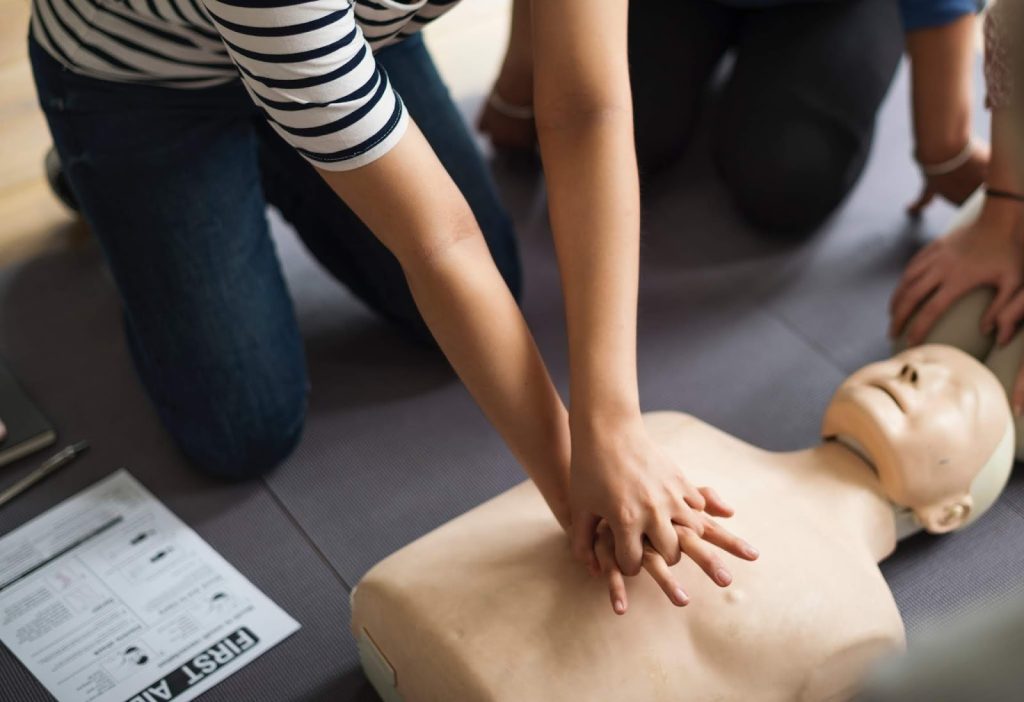Cardiopulmonary resuscitation, or CPR, is a useful skill that can save lives in some cases, like when someone has a heart attack. You should take first aid and CPR courses Townsville if you work in healthcare, as a first responder, or just because you want to be safe.
CPR is performed when someone’s heartbeat or breathing has stopped. The purpose is to maintain blood circulation and oxygenation to vital organs until professional medical help arrives. The steps involve chest compressions and rescue breaths.
Step-by-Step Guide to CPR
1. Assess the Situation
Before starting CPR, ensure the scene is safe for both you and the victim. Check for responsiveness by gently shaking the person and shouting, “Are you okay?”
2. Call for Help
If the person is unresponsive and not breathing normally, or only gasping, immediately call emergency services (dial 911 or your local emergency number). If there’s someone nearby, instruct them to call while you begin CPR.
3. Open the Airway
To get air into the lungs, tilt the head back gently and lift the chin. Hold your breath for up to 10 seconds while you look, listen, and feel. Do CPR if the person isn’t breathing or is only gasping for air.
4. Perform Chest Compressions
Put the bottom of one hand in the middle of the chest, between the ribs. Put your other hand on top and join your fingers together. With your arms straight, stand straight up above the person’s chest.
Compression Technique: Quickly and hardly push. Do 100 to 120 compressions per minute on the chest, making sure they go at least 2 inches (5 cm) deep. Let the chest fully relax in between compressions.
5. Provide Rescue Breaths
After 30 compressions, give two rescue breaths. Maintain the open airway (head tilt, chin lift). Close the person’s nose and put your mouth over theirs. Take a deep breath in and out for about one second, then watch their chest rise.
Alternative Technique (Hands-Only CPR): If you’re unable or unwilling to provide rescue breaths, continue chest compressions without interruption until help arrives.
6. Continue CPR
Alternate between 30 compressions and 2 breaths. Aim for cycles of about 2 minutes (or approximately 5 cycles) before reassessing the person’s condition or until help arrives to take over.
Tips for Effective CPR
Rhythm and Depth: Maintain a steady rhythm and ensure adequate depth for compressions.
Rotation: If others are available, switch rescuers every 2 minutes to prevent fatigue and maintain effectiveness.
AED Use: If there is an Automated External Defibrillator (AED) nearby, use it after CPR.
Conclusion
It’s important to know how to do CPR because it can make a big difference in an emergency. The chances of survival are better because it buys time until professional medical help comes. You might want to take a certified CPR course to learn how to do this life-saving method properly and feel confident doing it. Don’t forget that being quick and determined can really make a difference.
To sum up, taking a certified first aid course Townsville to learn CPR makes sure you’re ready to act quickly and successfully in an emergency. Following these steps regularly will help you stay ready and confident in your ability to save lives.

